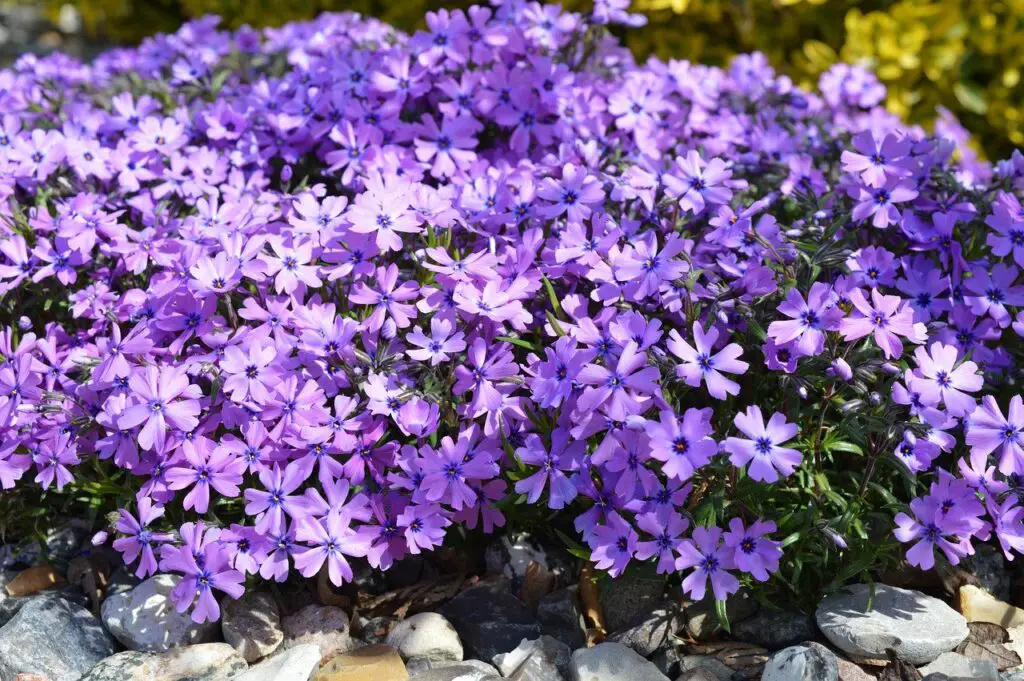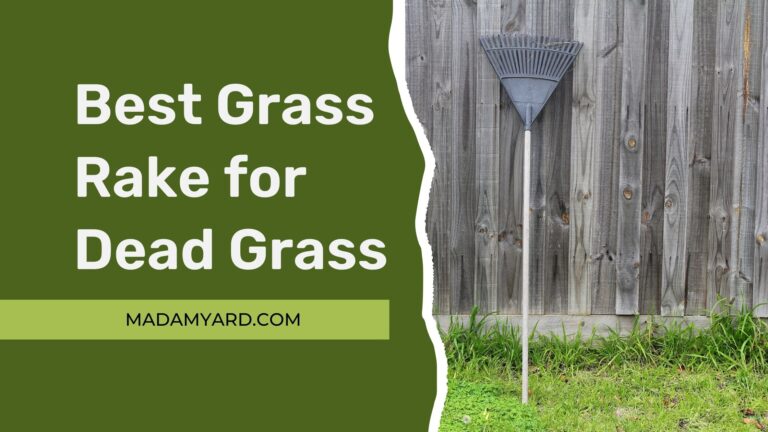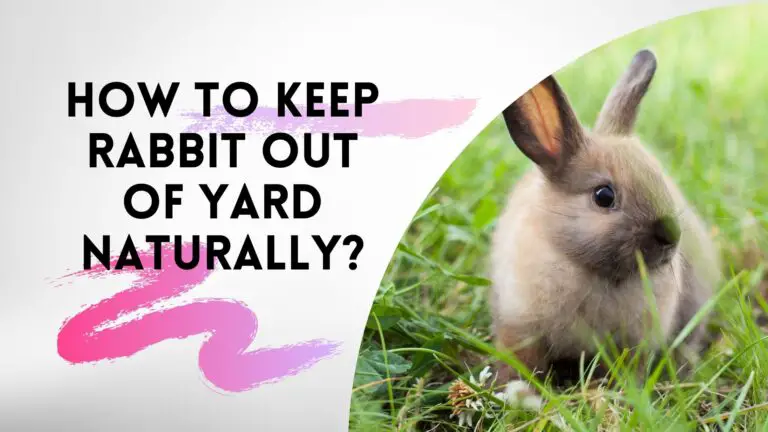Best Ground Cover Plants To Prevent Weeds
Ground cover plants to prevent weeds are a type of low-growing, low-maintenance perennial that is useful for improving your flower beds, front yard, sidewalks, and even weed prevention.
These plants are excellent for adding color, suppressing weeds, and reducing soil erosion. They flourish in bright and darker, more shady places.
Because certain plants are more precise about the type of weather they require to survive, we have provided alternatives that need both sunny and shady places, with temperature also playing a factor.
The good news is that most come in several colors and textures and may be used for various purposes, the most frequent of which is to reduce weed growth. This article will discover the best ground cover plants to prevent weeds.

Do Ground Cover Plants Prevent Weeds?
Best ground cover plants to prevent weeds offer several advantages, including the ability to prevent weed growth in your yard. The fact is that not every part of your yard is suitable for grass growth, which is where these ground coverings come in handy.
They are usually thought of as low-growing plant that expands across a large region over time. The goal is to produce a lovely carpet of leaves while squeezing out any lingering weeds.
Ground coverings may be made from many plants, including vines, grasses, plants with specialized blossoms, and even low-growing shrubs. Plus, they are all perennial, which means they shall grow from their roots year after year.
Nonetheless, many best ground cover plants to prevent weeds are better suited for specific geographic areas. Each plant will require a different degree of care and upkeep.
To assist you in getting started, I have compiled a thorough list of the best ground cover plants to prevent weeds.
1. Nepeta

Nepeta is not the most popular ground cover, but it is to consider if you want to make a bold statement.
This sterile hybrid, also known as nepeta catmint, is also known as nepeta catmint. The genus is extensive, with over 250 species, the majority of which are perennials.
Suppose you are searching for a decent groundcover. In that case, Nepeta x Faassenii is the ideal choice because it can drown out weeds. It grows best in full sun to moderate shade and enjoys a little drier soil.
2. Sweet Woodruff

Sweet woodruff is a fantastic choice for a low-maintenance ground cover, but only under particular conditions. When cultivated in damp soil, this fragrant herb may become an aggressive plant that expands out of control.
On the other hand, sweet woodruff makes an excellent ground cover in dry shade, such as beneath giant trees. It may even flourish in the acidic conditions found beneath tall pine trees. It reaches a maximum height of 12 inches and a width of 18 inches, and it blooms with white blossoms in the spring.
Because this plant prefers damp soils, growing it in dry soil and refusing it water helps keep it in control. You will have to experiment to find the correct balance between providing enough water to keep it healthy and providing too much to make it obtrusive. The leaves of sweet woodruff can be dried and used in wreaths, potpourri, and other crafts.
3. Golden Creeping Jenny

Lysimachia nummularia (Golden Creeping Jenny) is a tough ground cover that thrives in zones 3-9. It thrives in moist environments.
Although it thrives in partial shade, it is best grown in full sun for the best color. It has round canary yellow leaves and yellow flowers on long, chasing stems.
Creeping Jenny quickly covers enormous areas by spreading roots along its stems and drowning weeds.
It can be used to round a pond, trail along a wall, or border a path. The cultivar Aurea of creeping Jenny is well-behaved, although creeping Jenny may be an aggressive grower.
4. Aurinia Saxatilis

This drought-tolerant, low-maintenance ground cover may be planted at the border of a rock garden or other place and left alone throughout the summer.
After it has stopped flowering, or if it becomes too fuzzy for your liking, the only maintenance necessary is cutting it back.
Yellow alyssum is another name for Basket of Gold, referring to its lovely clusters of vivid yellow blooms.
Aurinia saxatilis, sometimes known as yellow alyssum, rather than sweet alyssum, is an entirely different species.
5. Hardy Geraniums

Hardy geraniums are very adaptable plants, thriving in the sun and the shade and many soil types. They work well in nearly every gardening style, from cottage gardens to more modern styles.
These plants are ideal for front-of-the-border plantings as well as beneath shrubs and roses. They are available in various colors, ranging from white to pink and blue.
Because they are not evergreen, their leaves die back in the winter, but they blossom for months, from late spring to early October, and are a favorite of bees.
Geranium is one of the greatest hardy geraniums. Its beautiful blue blooms brighten up the garden for months in the summer.
6. Lady’s Mantle (Alchemilla)

One of those fantastic plants can do three functions for you, three plants in one. It, of course, suffocates the weeds.
The broad, spherical leaves are the first to appear, spreading out in a weed-smothering mass. Then the straight flower stalks are crammed into such a small space that weeds can’t grow.
The blooms, swarms of tiny stars in a tremendous greenish tint that never clashes with anything else, come next. And the blooms also keep well in water, making them ideal for cutting.
Lady’s Mantle is usually placed around roses to disguise the barren stems at the base of the plant. It reaches a height of 30-50cm.
7. Bugleweed (Ajuga)

While Bugleweed (Ajuga) appears to be one of the more challenging plants, Lily of the Valley has stunning white bells hanging from strappy green foliage.
These lovely plants have a sweet scent and spread fast, so make sure to put them in a well-kept place, such as along long walks or near the home’s foundation.
These plants function well as a ground cover because of their fast growth and extensive root structure, which crowds out weeds as the plant expands.
It results in a dense, luxuriant carpet of lilies that are low-maintenance and surprisingly robust. The Lily of the Valley loves the shade as well, though it can tolerate moderate sun.
8. Mondo Grass

This glossy, strappy green is quite popular in the United Areas’ southern states, but this hardy plant may thrive elsewhere. It favors full-part light, grows in tiny clusters, and prefers wet soil.
Mondo Grass is one of the best ground coverings for weed control because it grows and spreads like wildfire
This tiny shrub enjoys full-part shade for best results, but it may tolerate a bit of early light. Due to its distinctive growth pattern, little upkeep, and the fact that it is low maintenance, it is sometimes referred to as monkey grass.
9. Creeping Thyme

This peculiar plant, sometimes known as the mother of thyme / wild thyme, is a spreading, woody-stemmed perennial often used as a low elevation cover.
The Creeping Thyme grows to reach around 3 inches tall and spreads over time, pushing out weeds and minimizing the amount of upkeep required.
These lovely leaves are rich pink and have a wonderful smell. They bloom from June through July.
In late spring, Creeping Thyme’s low-growing mats cover in small purple or white flowers, and while it thrives in full sun, it can also endure cold weather, poor soil, and droughts.
10. Phlox Stolonifera

Phlox stolonifera (tufted creeping phlox) is a North American native that loves wet soil and moderate shade. The evergreen needle-like leaves make a thick mat that efficiently suppresses weeds.
Phlox subulata creates a dense, attractive carpet in full-sun, dry regions that keep weeds separate.
It blooms in the early spring with small white or pink flowers. The ‘home flames’ variety is a fragrant cultivar with flaming pink flowers. It may grow up to 12 inches tall while blooming.
Best Ground Cover Plants To Prevent Weeds: Conclusion
As the weather warms, you might start thinking about your garden in preparation for planting more flowers and veggies.
There are much more ground covering flowers and plants to choose from if you do not want to take up all of your yard space with plants that grow too tall or wide.
These ground covers come in a wide range of sizes and colors, so you are sure to find one that works well in your garden!







